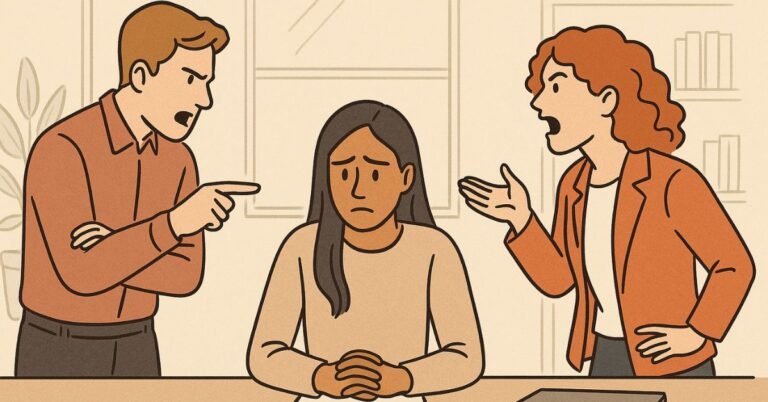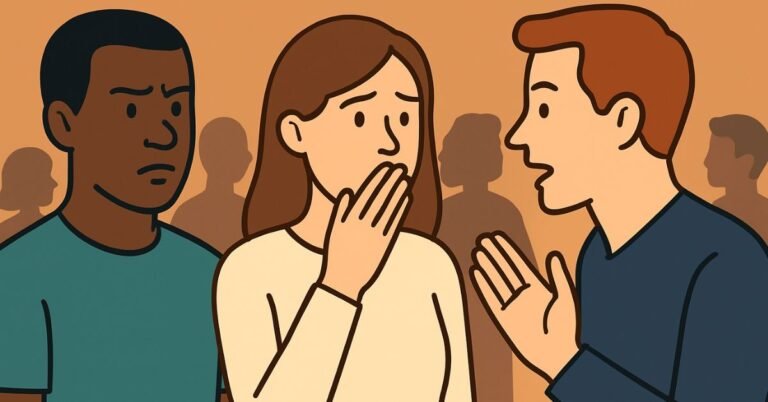Subtle racism: definition, examples and how to deal with it
When people think about racism, they often picture acts of open hostility: slurs, violence, or blatant discrimination. But racism is not always loud. Often, it moves in quieter, insidious ways that can be just as damaging. This is what we call subtle racism.
Subtle racism refers to everyday behaviors, remarks, or social dynamics that reflect racial bias without appearing aggressively hateful. It is often masked behind politeness, humor, or ignorance, which makes it harder to recognize, call out, or even explain. It’s important to clarify that subtle racism is not the same as covert racism or passive racism, although they can overlap. Subtle racism typically happens in public, normalized ways, it’s the micro-level, everyday racism many people encounter regularly.
Even though subtle racism can be easy to dismiss (“they didn’t mean it that way”), its cumulative impact can be deeply harmful, reinforcing feelings of alienation, exclusion, and unworthiness.
Examples of Subtle Racism
Subtle racism shows up in countless daily interactions, in schools, workplaces, social settings, and even among friends and family. Here are some clear examples:
- Backhanded compliments: Comments like “You’re so articulate!” said with surprise to a Black person or “You don’t even sound Latina!” to a Latina woman imply that intelligence or eloquence is unexpected based on someone’s race.
- Exoticization: Treating someone’s race or ethnicity as something “exciting” or “other,” like saying “You’re so beautiful for an Asian girl” or assuming someone must be passionate because they’re from a “fiery” culture.
- Assumptions based on race: Asking a person of color, “Where are you really from?” suggests that they are perpetual foreigners, even if they were born and raised in the same country.
- Stereotyping in casual conversation: Assuming an Asian person is good at math or that an Indigenous person must be deeply spiritual plays into harmful and reductive stereotypes.
- Cultural appropriation: Borrowing cultural symbols, clothing, or traditions (like wearing Native headdresses at festivals or using African American Vernacular English online) without understanding or respecting their significance.
- Unequal expectations: Teachers, employers, or authority figures assuming that Black or Indigenous students are less capable or less ambitious than their white peers, often unconsciously, but acting on these assumptions.
- Minimizing or dismissing concerns: When someone points out racism and the response is “You’re overreacting,” “It’s just a joke,” or “You’re being too sensitive,” it not only invalidates real experiences but also shifts blame onto the victim.
These moments might seem “small” to outsiders, but for those on the receiving end, they can accumulate into a constant, exhausting burden.
How Subtle Racism Reinforces Inequality
Subtle racism is not harmless simply because it’s not overt. In fact, its subtlety makes it more dangerous. It quietly reinforces stereotypes, normalizes exclusion, and maintains racial hierarchies without drawing much attention.
When subtle racism goes unchecked, it shapes people’s access to opportunities, influencing who gets hired, promoted, trusted, or welcomed. Over time, it conditions society to accept racial disparities as natural, rather than questioning the systems that produce them.
This is why recognizing and addressing subtle racism is crucial: small moments of bias, when left unchallenged, uphold larger structures of injustice.
How to Deal With Subtle Racism
Dealing with subtle racism can be particularly difficult because of its “deniable” nature. People can easily claim they didn’t mean harm, and others might doubt your experience. Here are some strategies to protect yourself and challenge subtle racism when it feels safe:
1. Trust Your Instincts
If something feels wrong, even if you can’t immediately explain why, trust your gut. Subtle racism often makes you question your perceptions and that’s part of its harm.
2. Name It
If you feel safe, point out the issue. This can be as simple as saying:
- “That comment made me uncomfortable.”
- “Why would you assume that about me?”
- “Can you explain what you meant by that?”
Naming it helps others reflect and interrupts the cycle of normalizing biased behavior.
3. Set Boundaries
You are not obligated to educate everyone or tolerate disrespect. It’s okay to remove yourself from conversations or relationships where subtle racism is repeatedly dismissed or minimized.
4. Seek Support
Find spaces. Whether among friends or community groups where you can talk openly and be heard. Support networks validate your experiences and remind you that you are not alone or “overreacting.”
5. Document Repeated Incidents
If subtle racism happens repeatedly in settings like work or school, keep a record. Write down dates, what was said or done, and who was present. Documentation can be critical if you decide to report the issue formally.
6. Educate When You Have Energy
Sometimes, subtle racism stems from ignorance rather than malice. If you have the emotional capacity, explaining why a comment is harmful can plant a seed for change. However, it’s important to know that educating others is not your job, it’s a choice you make for yourself.
7. Protect Your Well-being
Experiencing racism, even in subtle forms, wears on mental, emotional, and even physical health. Prioritize your own healing through activities that bring you joy, rest and empowerment.
Final Thoughts
Subtle racism might not always make headlines, but it shapes countless lives every day. Its quiet, persistent nature creates barriers to belonging and equality, often without drawing immediate attention.
Recognizing subtle racism, calling it out when possible, and supporting those affected by it are all essential steps toward dismantling broader systems of injustice. Change often starts with noticing the “small” things, because their impact is never really small at all.







